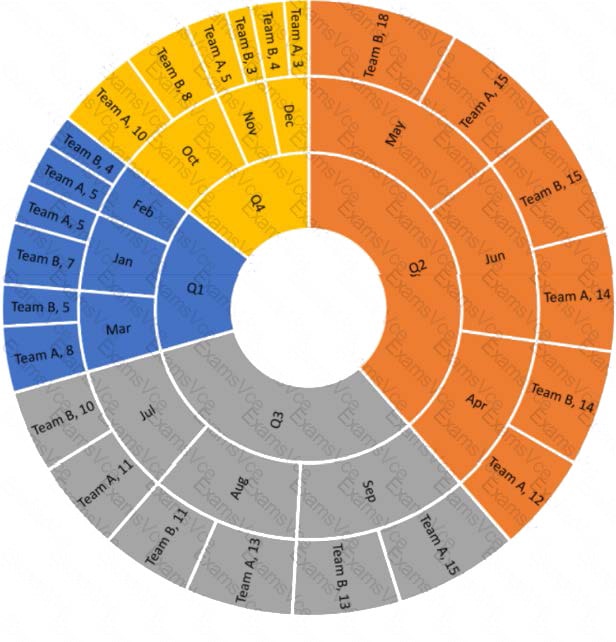Exam Details
Exam Code
:CBDAExam Name
:Certification in Business Data Analytics (CBDA)Certification
:IIBA CertificationsVendor
:IIBATotal Questions
:150 Q&AsLast Updated
:Jun 29, 2025
IIBA IIBA Certifications CBDA Questions & Answers
-
Question 101:
Collaborative games are used by a business analyst to identify the research questions to be explored within an analytics system.
Participants are asked to write down a research question on a sticky note, put the notes on the wall,and move them towards related research questions. What type of Collaborative game is being played?
A. Affinity Map
B. Fishbowl
C. People polling
D. Product Box
-
Question 102:
An analyst at a supermarket chain has been asked to extract data from multiple data sources to complete a study on customer spending habits. The analyst is going to query data from various databases. Which statement is true about database querying?
A. Querying can be used to create predictive data models
B. Irrespective of the querying language used, data results retrieved are always in a tabular format
C. A querying language is independent of the type of database being used
D. Querying is a structured way of searching, manipulating and managing data
-
Question 103:
A job satisfaction survey is being developed. Half of the employees will be asked the question "Do you enjoy working in your workplace?" The other half will be asked "Do you like the current work benefits?". The business analyst raises concern over the survey. What is concerning to the business analyst?
A. Precision
B. Reproducibility
C. Reliability
D. Validity
-
Question 104:
A business analyst constructs a model they would like to review with key business stakeholders but decides to review the model first with the data scientist who has performed the data analysis. The data scientist provides some suggestions on how to reduce the complexity in the model. One suggestion is to use color to group objects needing to be associated. The data scientist is encouraging using which Gestalt Principle of Perception with regards to data visualization?
A. Connection
B. Proximity
C. Similarity
D. Enclosure
-
Question 105:
Senior executives in a large organization receive numerous sales reports of every sale through a corporate dashboard on a weekly basis. The executives are considering budget increases for various functions but would like to know if they are obtaining good returns for current budget allocations. They ask the analytics team to research and answer: "How effective is our marketing spend?" This question is:
A. Already answered in the sales data
B. Difficult to analyze because its narrowly focused
C. Sufficient to begin initial analysis
D. Too broadly scoped to be effectively answered
-
Question 106:
The interplay between enterprise systems and data analytics can be envisioned at various layers. The layer that connects the business processes to data analytics is the:
A. information layer
B. physical layer
C. technical layer
D. infrastructure layer
-
Question 107:
There were 7 students enrolled in the Introduction to Artificial Intelligence course. These were the student's scores from the final exam: 64, 70, 80, 80, 90, 98, 100
What is the mean and mode for the outlined scores?
A. 83.14, 80
B. 79.84, 81.40
C. 80,80
D. 80, 83.14
-
Question 108:
The results for a certification exam were revealed in percentage and percentile. The results for one of the attendees was: 75%, 90th percentile. What is the value in sharing the percentile score?
A. The percentile score provides value by assessing the attendee's score against the average score for that exam
B. While the exam score is an objective score, the percentile is a relative score that assesses the attendee's score against the highest possible score
C. By ranking, it provided additional insight on how the attendee performed in comparison to other attendees
D. The percentile score does not add any additional value in assessing the attendee's performance
-
Question 109:
A real estate broker is tracking monthly sales between two of its teams. The results have been visualized. What insights can be drawn from the chart?

A. Q2 was the strongest performing quarter with Team B having the top monthly sales in May
B. Q3 was the strongest performing quarter with Team A having the top monthly sales in the quarter
C. Q4 was the lowest performing quarter with November having the lowest monthly sales in the year
D. Q4 was the lowest performing quarter with Team A having the lowest monthly sales in the Quarter
-
Question 110:
A government agency is conducting a study on the performance of 12th grade students' in mathematics across the country. In particular, they want to understand if there is a relationship between intelligence and scores, as well as the difference in performance between various locations. Which combination of inferential statistics procedures should be used?
A. Range, standard deviation
B. Mean, median
C. Correlation co-efficient, analysis of variance
D. Frequency distribution, time-series
Tips on How to Prepare for the Exams
Nowadays, the certification exams become more and more important and required by more and more enterprises when applying for a job. But how to prepare for the exam effectively? How to prepare for the exam in a short time with less efforts? How to get a ideal result and how to find the most reliable resources? Here on Vcedump.com, you will find all the answers. Vcedump.com provide not only IIBA exam questions, answers and explanations but also complete assistance on your exam preparation and certification application. If you are confused on your CBDA exam preparations and IIBA certification application, do not hesitate to visit our Vcedump.com to find your solutions here.